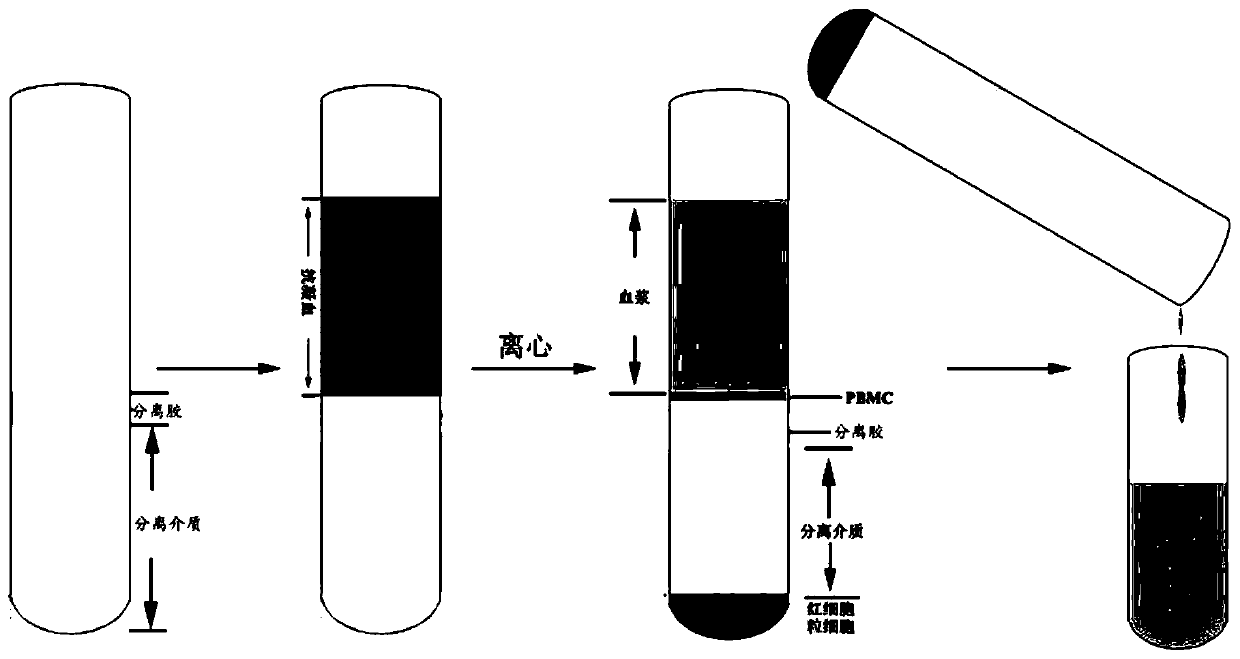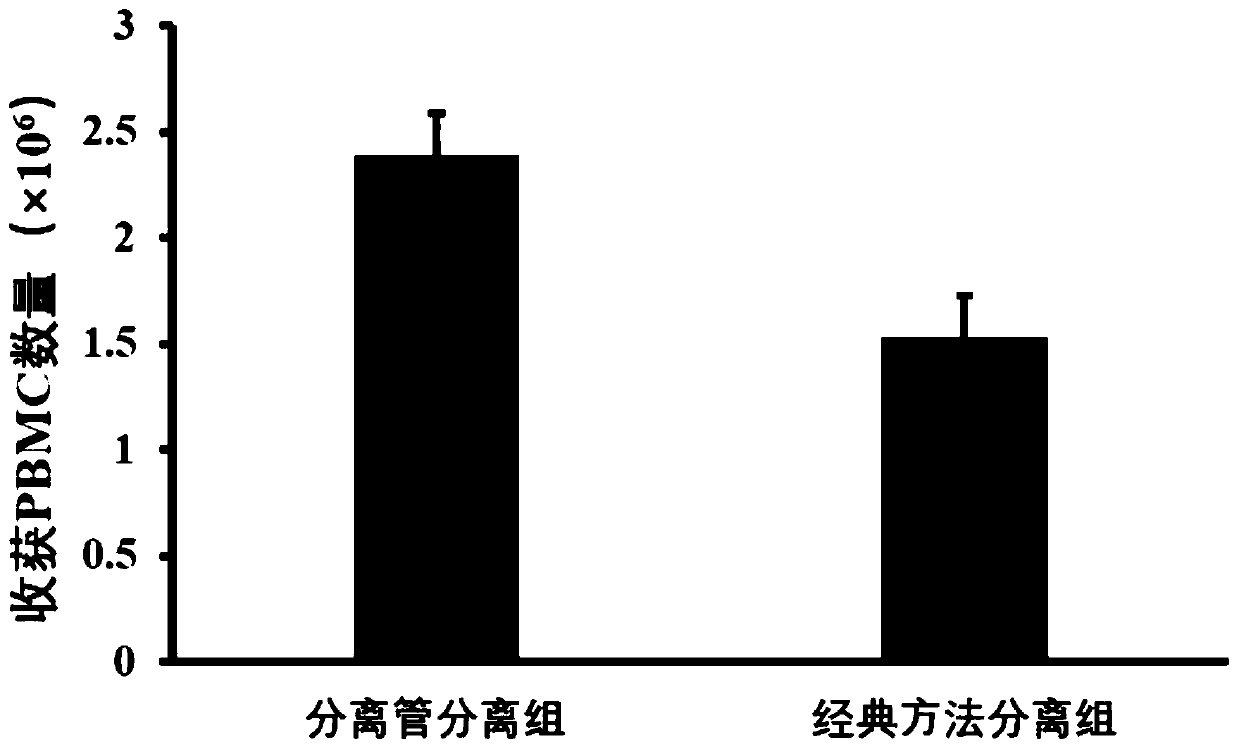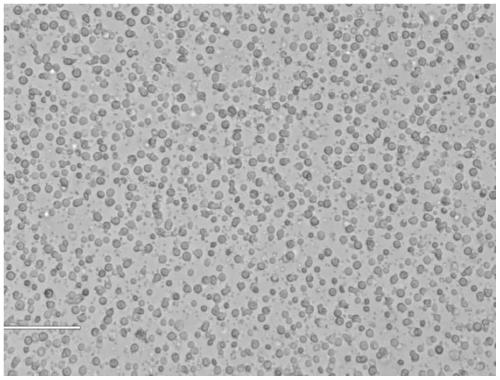Separation method for separating peripheral blood mononuclear cells
A separation method and nuclear cell technology are applied in the field of separation of peripheral blood mononuclear cells, which can solve the problems of cumbersome operation, failure of separation, easy to be polluted by other cells, etc., and achieve the effect of simple preparation
- Summary
- Abstract
- Description
- Claims
- Application Information
AI Technical Summary
Problems solved by technology
Method used
Image
Examples
Embodiment Construction
[0023] Method embodiment of the present application:
[0024] Use the same source of human peripheral anticoagulated whole blood to repeat three times, as follows:
[0025] First prepare the separation tube: first add 4ml of Percoll cell separation solution with a density of 1.075-1.0796g / ml to the 15ml centrifuge tube, draw 1ml of separation gel with a density of 1.06-1.07g / ml and add it to the mouth of the centrifuge tube, 1000g at room temperature Centrifuge for 2 minutes, and the separation gel forms an isolation layer on the surface of the Percoll cell separation medium;
[0026] Then carry out the separation of peripheral blood mononuclear cells: draw 4ml of anticoagulated whole blood and add it to the prepared 15ml separation tube. After horizontal centrifugation for 10 minutes, a layer of peripheral blood mononuclear cells visible to the naked eye is formed above the adjacent separation gel layer, while red blood cells are completely deposited at the bottom of the tub...
PUM
 Login to View More
Login to View More Abstract
Description
Claims
Application Information
 Login to View More
Login to View More - R&D
- Intellectual Property
- Life Sciences
- Materials
- Tech Scout
- Unparalleled Data Quality
- Higher Quality Content
- 60% Fewer Hallucinations
Browse by: Latest US Patents, China's latest patents, Technical Efficacy Thesaurus, Application Domain, Technology Topic, Popular Technical Reports.
© 2025 PatSnap. All rights reserved.Legal|Privacy policy|Modern Slavery Act Transparency Statement|Sitemap|About US| Contact US: help@patsnap.com



